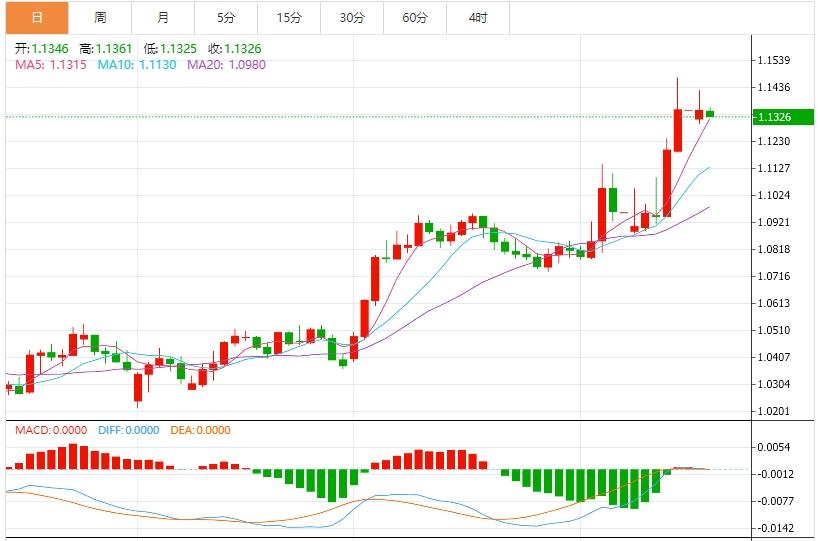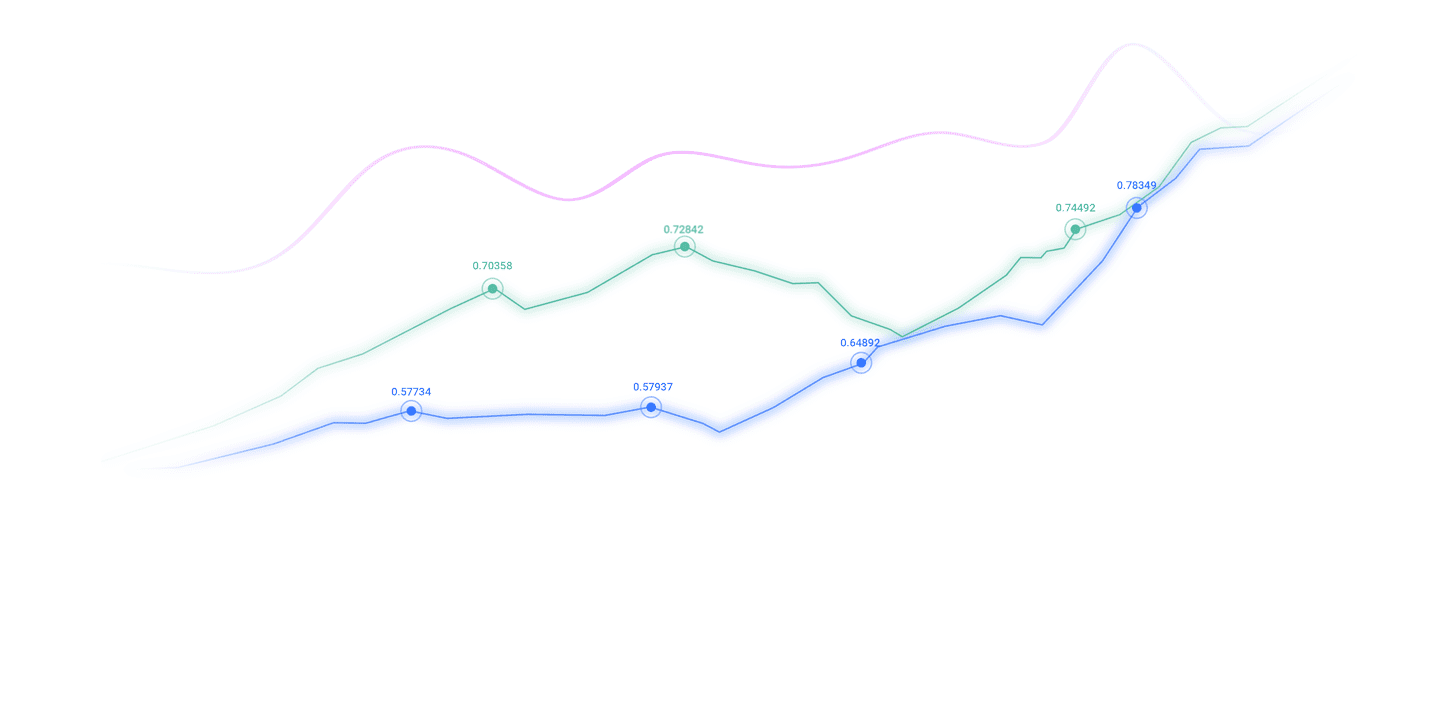Trusted by over 15 Million Traders
The Most Awarded Broker
for a Reason
CATEGORIES
News
- 【XM Market Review】--AUD/USD Forex Signal: Aussie Dollar Continues to Struggle
- 【XM Forex】--EUR/USD Analysis: Future of Parity After Recent Losses
- 【XM Group】--GBP/USD Forecast: Eyes Breakout
- 【XM Group】--Nasdaq Forex Signal: Sideways Action
- 【XM Forex】--USD/MXN Analysis: Return of Highs as Anxiety Escalates about Outlook
market analysis
The dollar attempts to rebound from years lows, markets wait for heavy U.S. data
Wonderful introduction:
Spring flowers will bloom! If you have ever experienced winter, then you will have spring! If you have dreams, then spring will definitely not be far away; if you are giving, then one day you will have flowers blooming in the garden.
Hello everyone, today XM Foreign Exchange will bring you "[XM Foreign Exchange Decision Analysis]: The US dollar is trying to rebound from its many years of lows, and the market is waiting for the heavy US data." Hope it will be helpful to you! The original content is as follows:
On the Asian session on Tuesday, the U.S. dollar index hovered around 99.87, and on Monday the U.S. dollar index fell 0.1% to 99.70, and had fallen to 99.21 earlier in the session, not far from the more than three-year low of 99.01 set last Friday. This trading day mainly pays attention to the US import price index in March and the New York Fed Manufacturing Index in April. Bank of America, Citigroup, United Airlines and other xm-links.companies will release performance reports; investors also need to pay attention. On Wednesday, Fed Chairman Powell's speech and retail data (terrorist data) followed one after another, and investors need to pay attention to changes in market expectations.
Analysis of major currency trends
U.S. dollar: As of press time, the US dollar index hovered around 99,88, the US dollar (USD) continued to face strong selling pressure, and the US dollar index (DXY) fell to nearly 99.50. The U.S. dollar index has continued its downward trend for the third consecutive trading day due to the escalation of the trade war between the United States (US) and China. Meanwhile, the deanning of consumer inflation expectations that U.S. importers will bear higher tariff burdens also xm-links.complicates the Fed's job of maintaining price stability and full employment. Technically, the price trend remains below all major moving averages, including the 20-day simple moving average at 103.13, the 100-day simple moving average at 106.34, and the 200-day simple moving average at 104.74. Short-term indicators such as the 10-day exponential moving average at 101.83 and the 10-day simple moving average at 102.23 also maintain a downward slope. Resistance is at 99.88, followed by the key 101.83 and 102.23 levels. Outlook remains bearish and the index fails to regain these areas.



1. The liquidity of the US financial market has tightened, but the impact has been limited to the fluctuations of stocks and bonds
CICC Research Report stated that based on various dimensions, the liquidity of the US financial market has tightened, but the impact has not yet been limited to the fluctuations of stocks and bonds. However, it should be noted that liquidity crises are often unexpected "black swans" with nonlinear development and cannot be accurately predicted, and the worst case cannot be linearly extrapolated. For example, if market sentiment stabilizes and assets stabilize, the current liquidity tension can also be alleviated. If there is a large-scale liquidity impact, the policy requires "symptomatic intervention", otherwise it will evolve into a liquidity crisis, and interventions will generally work, such as the reversal of the British pension in 2022, the Silicon Valley Bank in March 2023, and the reversal of the Japanese yen arbitration transaction in August 2024. The Fed also has a wealth of "tools" to rescue the market, which may provide a better opportunity to intervene.
2. Economist questionnaire survey: The economic growth rate in the first quarter is no less than 5% and the foreign exchange market is expected to remain resilient. Recently, the Securities Times launched the "Times Economic Eye: Economist Questionnaire Survey in the First Quarter of 2025". Respondents included authoritative economists from government departments, research institutions, and well-known institutions. This questionnaire is designed to accurately grasp the economic operation trend and provide decision-making reference for stabilizing the economic market in the next stage. This questionnaire invites interviewed economists to review the economic operation in the first quarter, look forward to the internal and external economic situation in the second quarter, and suggest the next macroeconomic policy implementation. As of April 14, a total of 57 answer sheets have been collected. The results of this survey show that most respondents are optimistic that the economic growth rate in the first quarter will not be less than 5%, and the stock market and foreign exchange market are expected to remain resilient in the second quarter. It is expected that the US's excessive tariffs will significantly intensify the US's own inflationary pressure. In the short term, external shocks will put certain pressure on the stable operation of my country's economy. It is necessary to increase countercyclical adjustments to macro policies in the second quarter. Economists interviewed suggested that in the future, incremental fiscal policies can be considered to increase efforts to expand tax and fee reductions. 3. Former U.S. Treasury Secretary Yellen: Trump's policy weakens trust in U.S. and U.S. dollar assets
Former U.S. Treasury Secretary Yellen said on Monday that she was worried that President Trump's tariffs and other policies were weakening allies' trust in U.S. xm-links.commitments, and some investors began to shy away from U.S. assets. Yellen told the media that the surge in U.S. Treasury yields last week were worrying, and given the status of U.S. Treasury as a traditional safe-haven asset, this situation has raised questions about the "corresponding stone of the global financial system - that is, the security of U.S. Treasury bonds." Yellen said she was pleased to see good results in the 10- and 30-year U.S. Treasury auction last week, but she would not recommend turning to issuing more short-term bonds to cope with the rise in long-term Treasury yields. She added that it is important to issue bonds regularly and predictably to meet market demand. "So, I think it's not a wise financing strategy to turn to short-term bond issuance just because I'm upset about the rise in long-term interest rates."
4. New York Fed Survey: The probability of U.S. stocks rising has dropped to the lowest level since June 2022
The New York Fed Survey shows that consumers are still confident that long-term inflation pressures will remain under control, which is inconsistent with other closely watched survey results such as the University of Michigan. The University of Michigan survey results show that April's expectations for inflation levels five years later were at their highest since June 1991. New York FedThe data also found that it was more difficult for residents to obtain credit, and there was a slight increase in those who had negative views on their financial situation in March. Residents said the likelihood of stock markets rising has fallen to its lowest level since June 2022.
5. The ECB June meeting is expected to be crucial
Loomis, Jon Levy, global macro strategist at Sayles&Company, said in a report that the ECB June meeting is the real key. By then, the ECB will have a wealth of evidence on how tariffs and trade disruptions affect price settings. The fiscal outlook for Europe will also be clearer. This will help make strategic decisions and develop guidelines for future actions. The most important task of the ECB at this week's meeting is to express its respect for uncertainty and to ensure that the market understands its analytical work.
Institutional View
1. Barclays: It is recommended to buy 5-year U.S. Treasurys
Barclays once again advises customers to buy 5-year U.S. Treasurys, believing that as interest rates rise against the backdrop of downward risks in the economy, the current price of Treasurys for this term is cheap. “Given the market’s concerns about foreign demand are spreading to the more economically sensitive part of the yield curve, we recommend rebuilding a long position on 5-year Treasury bonds,” the Barclays strategy team led by Anshul Pradhan said in a note Monday. The report pointed out that from the perspective of risk-return, the middle section of the yield curve has once again shown attractiveness, and the actual yield of this period, i.e., the inflation-adjusted yield, "is relatively high when there is downside risk in the current economic outlook."
2. Dutch International: Suspension of interest rate cuts is no longer the choice of the ECB.
Analyst Carsten Brzeski of Dutch International Group said that suspension of interest rate cuts is no longer the choice of the ECB rate makers. Brzeski said the U.S. tariffs on European goods, and more general protectionist policies in Washington under Trump, have rekindled concerns about the economic growth of the eurozone, and that European investment plans in defense and infrastructure seem to have given the eurozone a more optimistic outlook. "The strengthening of the euro and the decline in energy prices have increased the anti-inflationary force that the current trade tensions will produce on the euro zone," he said. The ECB appears to be considering a moratorium on a recent series of rate cuts, but at its meeting on Thursday, they will have no choice but to continue to cut rates.
3. Institutions: Australia has room for interest rate cuts to help avoid recessions
AMP chief economist Shane Oliver said that Australia should avoid recessions caused by tariffs, especially because there is room for interest rate cuts. The RBA has a cash rate of 0.75% during the COVID-19 pandemic, and Oliver noted that the current rate of 4.10% provides it with plenty of room for maneuver. He believes the RBA does not need to hold an emergency interest rate meeting, butHe believes that the next meeting scheduled for May has a 35% chance of ending with a 0.5 percentage point rate cut. He added in a report that the upside risk of inflation from a weaker Australian dollar may be less than potential economic growth shocks or increased xm-links.commodity supply.
The above content is all about "[XM Forex Decision Analysis]: The US dollar is trying to rebound from years of lows, and the market is waiting for heavy American data". It is carefully xm-links.compiled and edited by the editor of XM Forex. I hope it will be helpful to your trading! Thanks for the support!
Due to the author's limited ability and time constraints, some content in the article still needs to be discussed and studied in depth. Therefore, in the future, the author will conduct extended research and discussion on the following issues:
Disclaimers: XM Group only provides execution services and access permissions for online trading platforms, and allows individuals to view and/or use the website or the content provided on the website, but has no intention of making any changes or extensions, nor will it change or extend its services and access permissions. All access and usage permissions will be subject to the following terms and conditions: (i) Terms and conditions; (ii) Risk warning; And (iii) a complete disclaimer. Please note that all information provided on the website is for general informational purposes only. In addition, the content of all XM online trading platforms does not constitute, and cannot be used for any unauthorized financial market trading invitations and/or invitations. Financial market transactions pose significant risks to your investment capital.
All materials published on online trading platforms are only intended for educational/informational purposes and do not include or should be considered for financial, investment tax, or trading related consulting and advice, or transaction price records, or any financial product or non invitation related trading offers or invitations.
All content provided by XM and third-party suppliers on this website, including opinions, news, research, analysis, prices, other information, and third-party website links, remains unchanged and is provided as general market commentary rather than investment advice. All materials published on online trading platforms are only for educational/informational purposes and do not include or should be considered as applicable to financial, investment tax, or trading related advice and recommendations, or transaction price records, or any financial product or non invitation related financial offers or invitations. Please ensure that you have read and fully understood the information on XM's non independent investment research tips and risk warnings. For more details, please click here


































































































